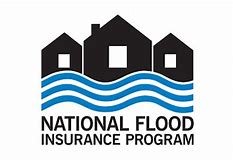Private market & NFIP progress being made while Congress idle
 So, what are we to do about the National Flood Insurance Program (NFIP), which still provides about 95% of the flood policies in the U.S.? The federal program is coming up for expiration November 30 from another temporary four-month extension granted this past summer. Predictions are that Congress will kick the can down the road for the 7th time and pass another short-term extension of the program rather than long-term needed reforms.
So, what are we to do about the National Flood Insurance Program (NFIP), which still provides about 95% of the flood policies in the U.S.? The federal program is coming up for expiration November 30 from another temporary four-month extension granted this past summer. Predictions are that Congress will kick the can down the road for the 7th time and pass another short-term extension of the program rather than long-term needed reforms.
The U.S. House of Representatives last November passed the 21st Century Flood Reform Act but the Senate has yet to do so. Reauthorization has bi-partisan support, with conflicts arising out of regional interests, specifically coastal interests that want to retain the heavily subsidized rating structure and grandfathered properties benefit. Among the biggest stalemate issues: what to do about repetitive loss properties, which are 2% of the NFIP policy count but gobble nearly 25% of claims payouts.
Should reauthorization lapse, the NFIP wouldn’t be able to write new or renew existing policies. Home sales relying on federally-backed loans, which require flood insurance, would come to a standstill. The National Association of Realtors® is once again rightfully sounding the alarm: the last time the program expired, 1,300 home sales each day were disrupted.
In the meantime, FEMA has not been idle and deserves credit for making program improvements on its own that don’t require Congressional approval.
That FEMA Inspector General report we referenced in an earlier newsletter story, found that only 42% of NFIP’s maps “adequately identified the level of flood risk,” without which property owners won’t know their true vulnerability and FEMA won’t know whether NFIP rates reflect the real risk of flooding. FEMA is responding by beginning the slow process of moving to computer modeling in hopes of replacing the old maps, but it’s expected to take years to fully implement.
Here are some startling statistics on what’s at stake here in Florida:
- Nearly 60% of Floridians who live in flood hazard zones have no flood insurance
- The other 40% have purchased 1.75 million NFIP policies – the largest share of any state in the U.S. – paying $962 million in premiums as of January 2018, covering about $434 billion in property value.
- NFIP rates rose an average 8% in 2018 – following rate increases of 18%-25% in recent years – and are expected to rise again in 2019 as part of a risk-rating “redesign”.
- The Tampa Bay area is the third most at-risk area in the country for flood, with almost 460,000 homes at risk from tidal storm surge from the Gulf of Mexico and Tampa and Hillsborough Bays. The cost to rebuild those homes is estimated at nearly $81 billion.
The answer of course, as we’ve expounded on many times here in the LMA Newsletter, is to promote a vibrant private flood insurance market in every state in the U.S., just as we’ve done here in Florida. Nearly 30 insurance companies offer primary flood coverage today in Florida.
The private market won’t replace the NFIP, but can and is (in states where it exists) providing a natural complement, at competitive prices, with better coverage, and resulting in a greatly reduced burden to U.S. taxpayers who continue to eat the NFIP’s debt, currently about $20.5 billion. This recent Value Penguin article explains why private flood Insurance is an increasingly viable and available option for consumers. We’re watching this issue like a hawk and will keep you updated.

